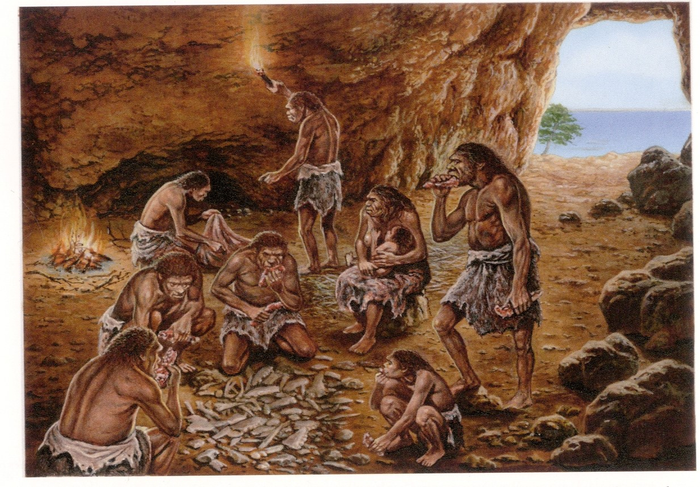Study sheds new light on how early cave-dwelling humans learnt to control fire
New research suggests Paleolithic people 170,000 years ago worked out how to position a hearth to maximise warmth but minimise exposure to smoke, reports Emily Atkinson

A new study has uncovered how cave-dwelling humans learnt to control fire to evade overexposure to smoke up to 170,000 years ago.
According to researchers in prehistoric archaeology at Tel Aviv University (TAU), early humans placed the hearth at the optimal location in their cave. The positioning would allow them to maximise warmth - to work, cook, eat and sleep - while minimising exposure to smoke.
Researchers said this method reflected Paleolithic “ingenuity, experience, and planned action, as well as awareness of the health damage caused by smoke exposure.
Students and professors at the Department of Archaeology and Ancient Near Eastern Cultures at TAU developed a software-based smoke dispersal simulation model and applied it to a known prehistoric site in southeastern France.
Yafit Kedar, PhD student, said researchers had sought to answer questions such as: “At what point in their evolution did humans learn how to control fire and ignite it at will? When did they begin to use it on a daily basis? Did they use the inner space of the cave efficiently in relation to the fire?”
She added: “While all researchers agree that modern humans were capable of all these things, the dispute continues about the skills and abilities of earlier types of humans.
“One focal issue in the debate is the location of hearths in caves occupied by early humans for long periods of time. Multilayered hearths have been found in many caves, indicating that fires had been lit at the same spot over many years.
“In previous studies, using a software-based model of air circulation in caves, along with a simulator of smoke dispersal in a closed space, we found that the optimal location for minimal smoke exposure in the winter was at the back of the cave. The least favourable location was the cave’s entrance.”
The researchers applied their model, based on previous reproductions, to an extensively studied site, the Lower Paleolithic Lazaret Cave in France, which was occupied by humans up to 170,000 years ago. They found locating the hearth at the back of the cave would have minimised smoke density.
According to Ms Kedar, this would allow the smoke to “circulate out of the cave right next to the ceiling.”
“But in the archaeological layers we examined the hearth was located at the centre of the cave, “ she said. “We tried to understand why the occupants had chosen this spot, and whether smoke dispersal had been a significant consideration in the cave’s spatial division into activity areas.”
Ms Kedar and his colleagues arranged a number of smoke dispersal simulations for 16 potential hearth locations inside the 290sqm cave. They then used thousands of simulated sensors, placed 1.5m from the floor and 50 cm apart, to measure the smoke density in various parts of the cave.
Using this method, the researchers found that the average smoke density was minimal when the hearth is placed at the back of the cave.
“But we also discovered that in this situation, the area with low smoke density, most suitable for prolonged activity, is relatively distant from the hearth itself,” Ms Kedar said.
The study identified a 25sqm area in the cave which would be optimal for locating the hearth in order to enjoy its benefits, while avoiding too much exposure to smoke.
Extraordinarily, in the several layers examined by Ms Kedar, the early humans actually did place their hearth within this area.
Prof Ran Barkai, one of the study’s leaders, said: “Our study shows that early humans were able, with no sensors or simulators, to choose the perfect location for their hearth and manage the cave’s space as early as 170,000 years ago – long before the advent of modern humans in Europe.
“This ability reflects ingenuity, experience, and planned action, as well as awareness of the health damage caused by smoke exposure. In addition, the simulation model we developed can assist archaeologists excavating new sites, enabling them to look for hearths and activity areas at their optimal locations.”
Join our commenting forum
Join thought-provoking conversations, follow other Independent readers and see their replies
Comments